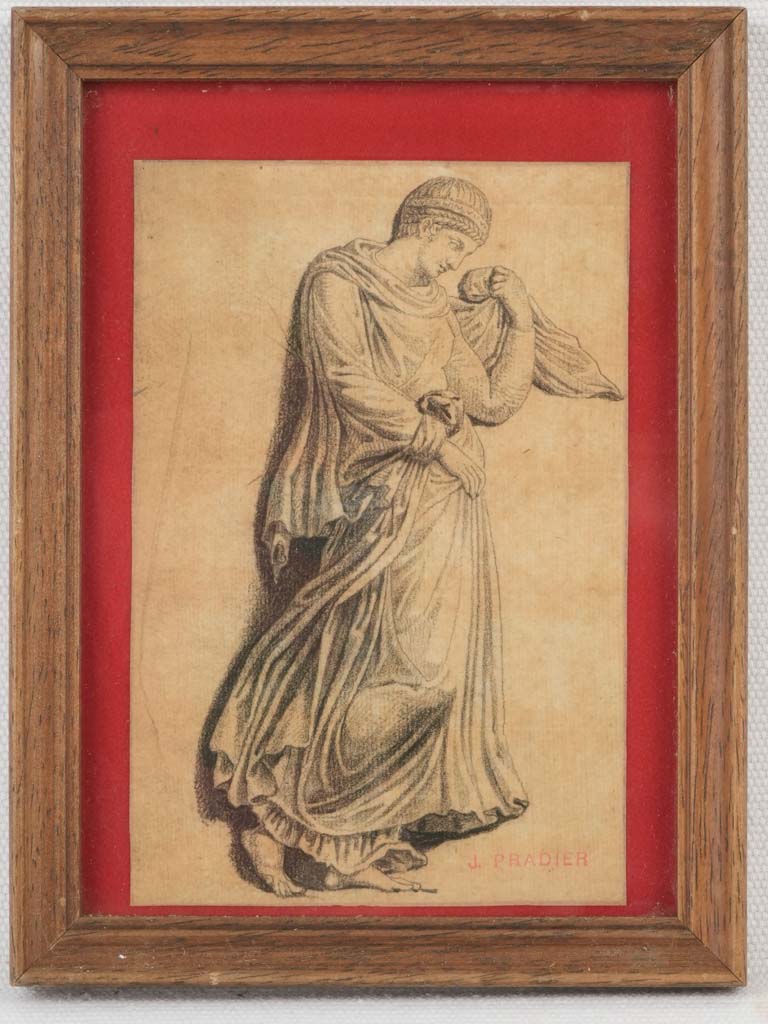
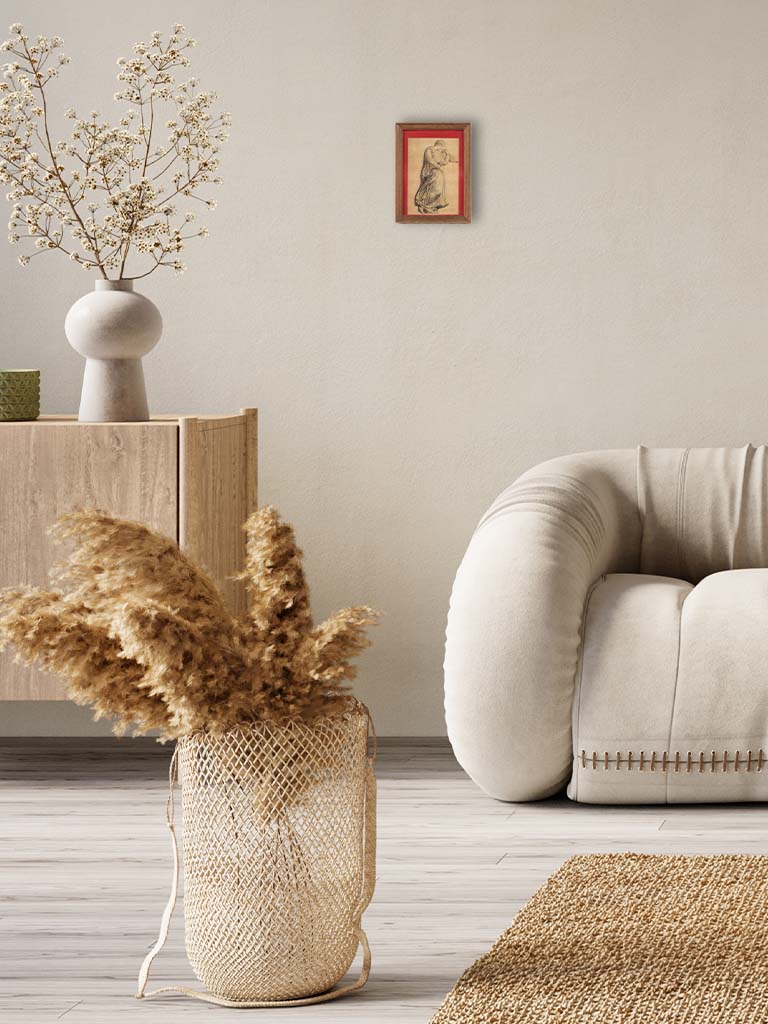
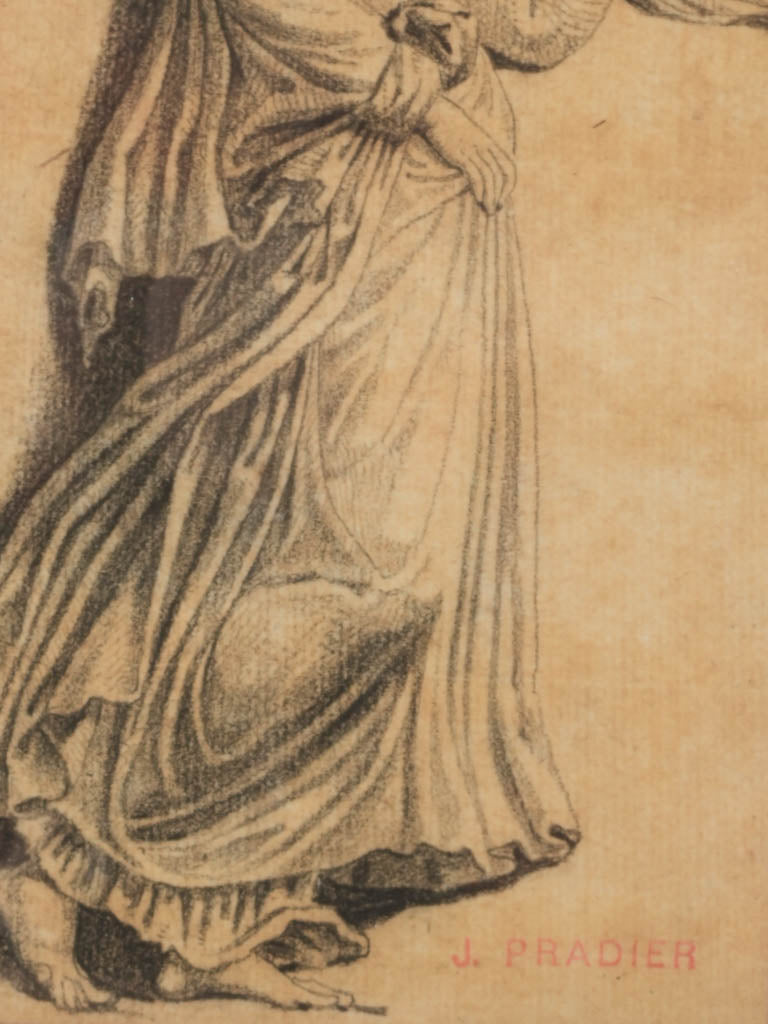
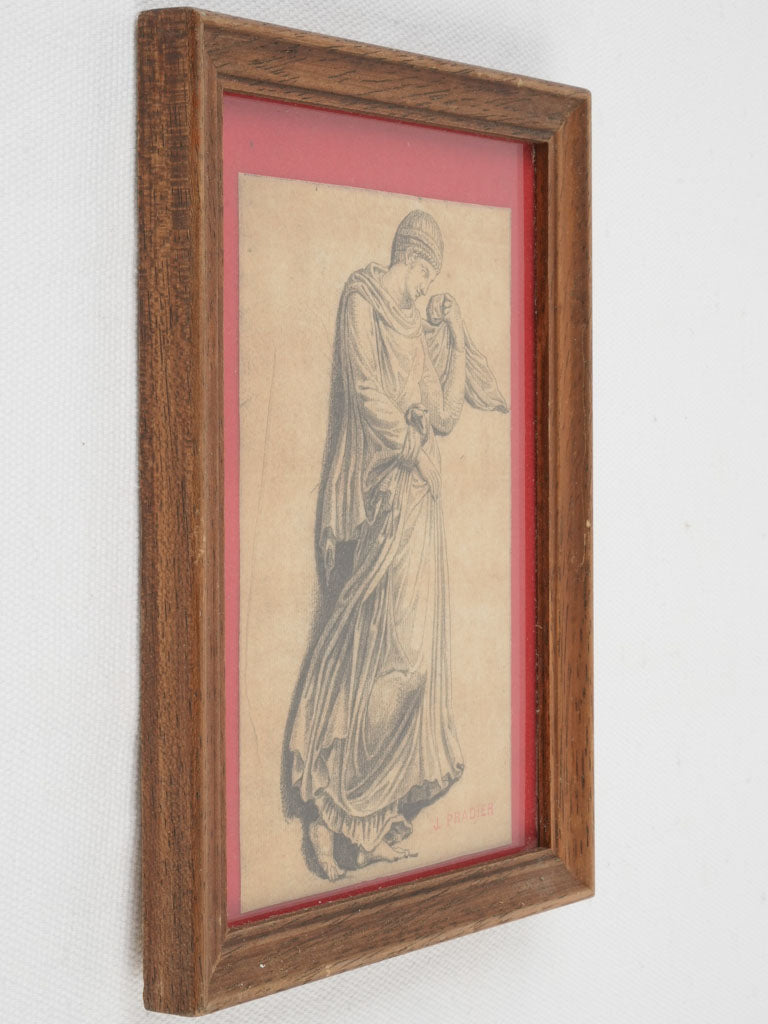
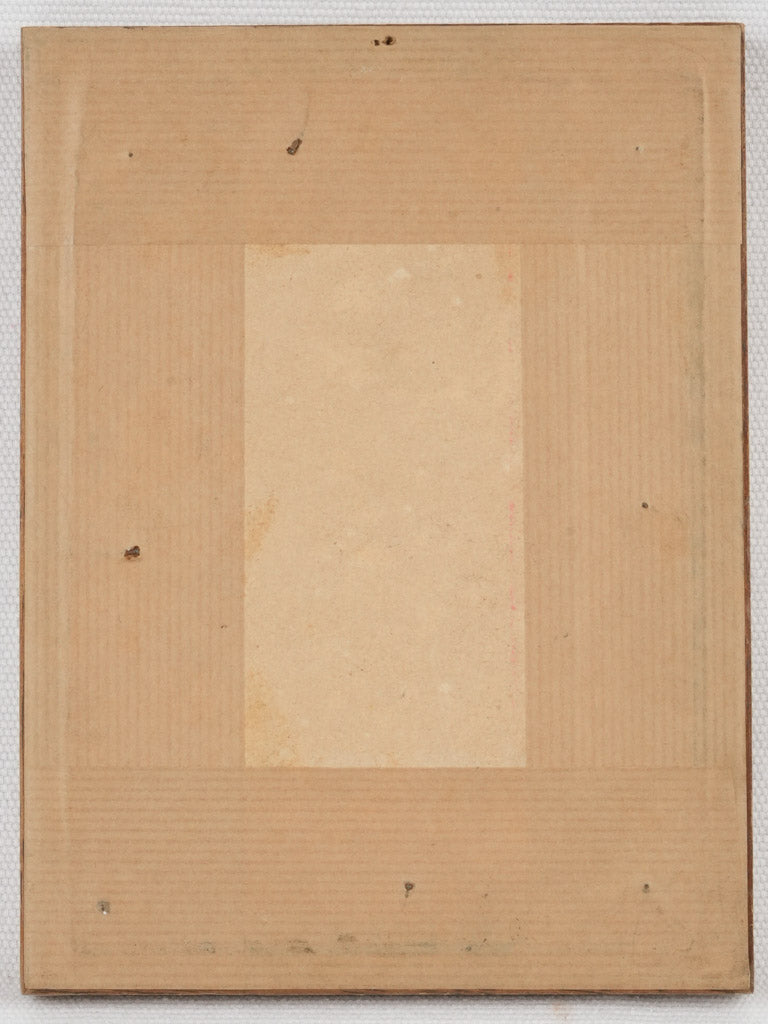
Drawing by James Pradier (1790–1852) – Draped Classical Female Figure in Contemplative Pose - 8" x 6"
Free shipping to USA
The price is all-inclusive, no duties, taxes or shipping.
This finely rendered pencil drawing by James Pradier (1790–1852) depicts a draped female figure in a reflective pose, embodying grace and dignity.
Standing with her head gently bowed, one hand near her chest and the other gathering the flowing folds of her garment, the figure exudes a sense of quiet contemplation or sorrow. The intricate detailing of the robes, with their rich layers and naturalistic folds, highlights Pradier’s exceptional skill in capturing texture and movement.
The modest posture, bare feet, and classical attire suggest the figure may represent an allegorical concept such as Virtue, Grief, or Penitence. Alternatively, the figure could evoke a historical Roman matron, such as Sabina, wife of Emperor Hadrian, known for her stoic endurance, or Agrippina the Elder, celebrated for her virtue and strength. The solemn yet elegant demeanor lends itself to themes of endurance, loss, or feminine strength, frequently explored in classical art and revived during the Neoclassical period.
James Pradier was a Swiss-born French sculptor and draughtsman celebrated for his ability to blend classical ideals with Romantic emotion. After winning the Prix de Rome in 1813, Pradier spent time in Italy, where he studied classical art, which became a defining influence in his work. His most famous sculptures include “The Three Graces” (now in the Louvre), the seated allegorical figures of Fame, Prudence, and Justice on Napoleon’s tomb at Les Invalides, and public works such as the statues on the Fontaine Molière in Paris.
Pradier’s personal life was marked by passionate relationships, including an affair with Juliette Drouet, Victor Hugo’s muse. His art often reflected his fascination with the feminine form, imbuing his works with both idealized beauty and emotional depth.
This drawing, framed with a red mat and wooden border, exemplifies Pradier’s skill as a draughtsman and his sensitivity to classical themes. It is a rare and intimate work, ideal for collectors of Neoclassical art or those interested in Pradier’s legacy as a master of classical elegance.
Condition and wear consistent with age and use.
Approx. overall 8" high x 6" wide x 0¾" deep incl. frame
Approx. overall 20cm high x 15cm wide x 2cm deep incl. frame
Choose options

